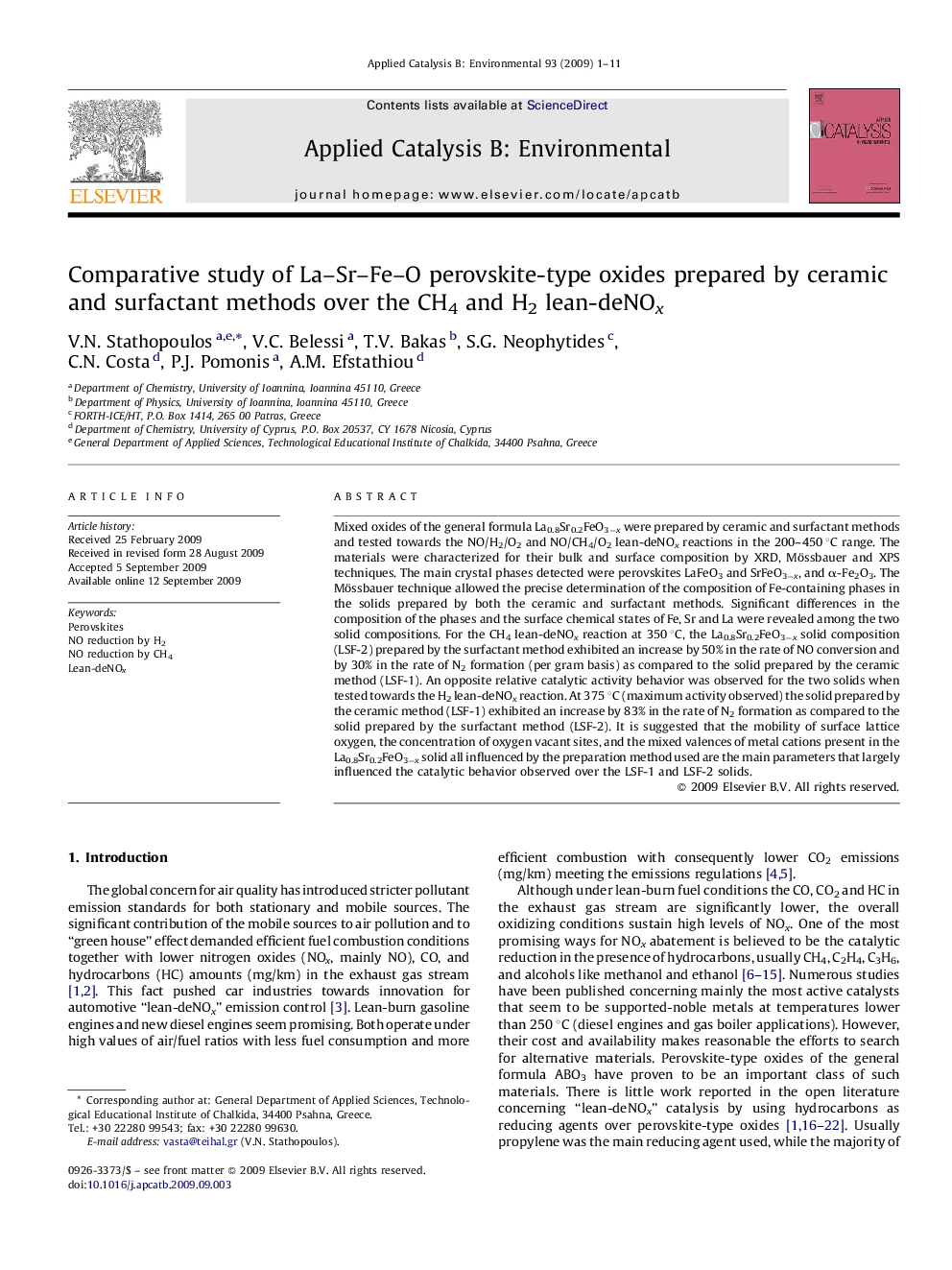| Article ID | Journal | Published Year | Pages | File Type |
|---|---|---|---|---|
| 47341 | Applied Catalysis B: Environmental | 2009 | 11 Pages |
Mixed oxides of the general formula La0.8Sr0.2FeO3−x were prepared by ceramic and surfactant methods and tested towards the NO/H2/O2 and NO/CH4/O2 lean-deNOx reactions in the 200–450 °C range. The materials were characterized for their bulk and surface composition by XRD, Mössbauer and XPS techniques. The main crystal phases detected were perovskites LaFeO3 and SrFeO3−x, and α-Fe2O3. The Mössbauer technique allowed the precise determination of the composition of Fe-containing phases in the solids prepared by both the ceramic and surfactant methods. Significant differences in the composition of the phases and the surface chemical states of Fe, Sr and La were revealed among the two solid compositions. For the CH4 lean-deNOx reaction at 350 °C, the La0.8Sr0.2FeO3−x solid composition (LSF-2) prepared by the surfactant method exhibited an increase by 50% in the rate of NO conversion and by 30% in the rate of N2 formation (per gram basis) as compared to the solid prepared by the ceramic method (LSF-1). An opposite relative catalytic activity behavior was observed for the two solids when tested towards the H2 lean-deNOx reaction. At 375 °C (maximum activity observed) the solid prepared by the ceramic method (LSF-1) exhibited an increase by 83% in the rate of N2 formation as compared to the solid prepared by the surfactant method (LSF-2). It is suggested that the mobility of surface lattice oxygen, the concentration of oxygen vacant sites, and the mixed valences of metal cations present in the La0.8Sr0.2FeO3−x solid all influenced by the preparation method used are the main parameters that largely influenced the catalytic behavior observed over the LSF-1 and LSF-2 solids.
